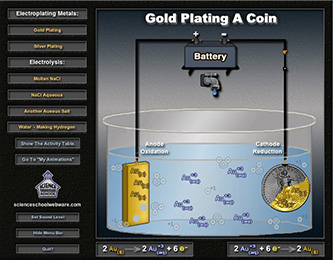
Electroplating is a process in which a metal which can be resistant to corrosion (e.g. Zinc) will coat a metal that corrodes (iron/steel). The aesthetic finish of this will depend on the coating product applied, and uses the process of electrolysis to coat a base metal..
Electrolysis works with a positive anode and a negative cathode, and metals with positive and negative will attract to their oppositely-charged anode/cathode. The anode is typically what you're trying to plate.
Anodising:
 This process can make a mterial more durable and scratch-resistant. Similar to electroplating, it works by containing a sulphuric acid solution which is the electrolyte, the aluminium as an anode and lead as the cathode, an electric circuit is completed through the solution, where ions then attract so negatively charged ions will attract to the aluminium for it being a positively charged anode. These ions will cover the anode in layers, and between layers dyes may be added to give the product a coloured aesthetic quality. After the layers have been applied, the process is then completed by having the aluminium sealed with a laquer.
This process can make a mterial more durable and scratch-resistant. Similar to electroplating, it works by containing a sulphuric acid solution which is the electrolyte, the aluminium as an anode and lead as the cathode, an electric circuit is completed through the solution, where ions then attract so negatively charged ions will attract to the aluminium for it being a positively charged anode. These ions will cover the anode in layers, and between layers dyes may be added to give the product a coloured aesthetic quality. After the layers have been applied, the process is then completed by having the aluminium sealed with a laquer.















